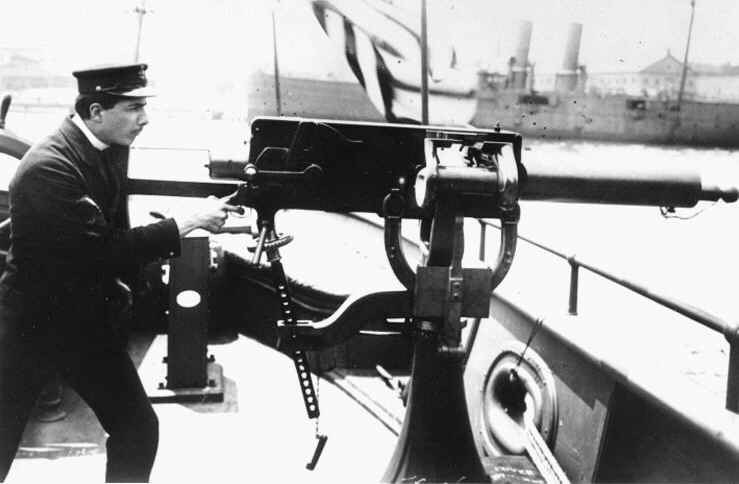|
The earliest of these weapons was the Sponsell Gun, manufactured by Pratt and Whitney which had a vertically sliding breech block. No Mark number was assigned to this gun. Mark 1 was the Hotchkiss light, short Mark 1 gun on a non-recoil mount. Mark 1 Mod 1 was the Hotchkiss light, long Mark 2 gun on a recoil mount. Both of these Mark 1 guns were produced in different lengths, making it difficult to assess performance. Mark 2 was a Driggs-Schroeder heavy Mark 1. Mark 3 was the Hotchkiss heavy, long Mark 1 gun. Mark 4 was the Driggs-Schroeder heavy, long Mark 2. Mark 5 was the Hotchkiss heavy Mark 2. Mark 6 was the heavy machine cannon which was used as an anti-aircraft gun during World War I. It was originally the Maxim-Nordenfeldt heavy, automatic Mark 1 and entered service just before the Spanish-American War. This gun used a water-jacket. Mark 7 was similar but had a shorter barrel. Mark 8 was the Hotchkiss heavy, semi-automatic Mark 3. Mark 9 was the Maxim-Nordenfeldt light, automatic Mark 1. Mark 10 was a rapid-fire aircraft gun with a Hotchkiss-type breech. Mark 11 was a Hotchkiss-type line-throwing gun. Mark 12 was a monobloc gun with a Driggs sliding and rotating drop breech block. Mark 13 a Mark 5 with monobloc rather than built-up construction. Mark 14 was a Baldwin design manufactured by Poole during World War I and was an automatic gun with a flexible mount. The Mark 15 was similar but used a much larger cartridge for a higher muzzle velocity. Many automatic guns were remounted as anti-aircraft weapons during World War I. The data that follows is specifically for the Hotchkiss 40 gun unless otherwise noted. |

CPO demonstrating a Maxim-Nordenfeldt 1-pdr
Mark 6 aboard USS Hist about 1898
|
| .
|